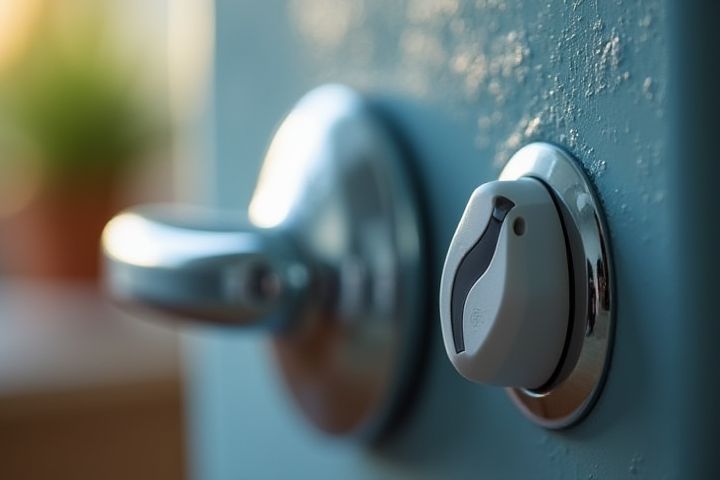
Refrigerators are one of the most energy-consuming appliances in homes, continuously running to keep food fresh. Water heaters also rank high on the energy usage list, as they maintain hot water for showers and cleaning. HVAC systems, including air conditioners and heaters, significantly contribute to energy bills, particularly in extreme weather conditions. Clothes dryers consume substantial energy per cycle, especially if used frequently for large loads. Dishwashers, while more efficient than washing by hand, still require a significant amount of energy, especially with heated drying cycles.
What House Appliances Use Most Energy
Air Conditioners
Air conditioners are among the most energy-intensive household appliances, often accounting for a significant portion of your electricity bill, especially during peak summer months. Models with a higher SEER (Seasonal Energy Efficiency Ratio) rating assure more efficient energy use, helping to reduce operational costs. Regular maintenance, such as replacing filters and cleaning coils, can enhance performance and lower energy consumption. Selecting the right size air conditioner for your space is crucial; an oversized unit may cool too quickly without dehumidifying the air, leading to wasted energy.
Water Heaters
Water heaters are among the top household appliances that consume significant energy, often accounting for about 14% of your home's total electricity usage. Tank-style water heaters, which store hot water for immediate use, typically operate continuously to maintain temperature, leading to increased energy bills. In contrast, tankless water heaters provide hot water on demand, improving efficiency and reducing energy waste. To optimize energy usage, consider lowering the thermostat setting to 120degF and insulating the water heater and pipes to minimize heat loss.
Refrigerators
Refrigerators typically account for about 13% of your household energy consumption, making them one of the most energy-intensive appliances. The average yearly energy use for standard refrigerators is around 400-800 kWh, depending on factors such as size, age, and energy efficiency ratings. Energy Star certified refrigerators consume significantly less power, often providing 20% more efficiency compared to non-certified models. By choosing newer models with advanced technologies, you can potentially lower your electricity bill by $100 or more annually.
Clothes Dryers
Clothes dryers rank among the most energy-consuming household appliances, typically using between 2 to 6 kilowatt-hours (kWh) per cycle, depending on the model and moisture levels in the laundry. Gas dryers can be more efficient, using less energy than their electric counterparts, but both types contribute significantly to energy bills over time. You can reduce energy use by choosing energy-efficient models, maintaining proper ventilation, and cleaning lint traps regularly to enhance airflow. Utilizing moisture sensors can further optimize drying cycles, ensuring that clothes are dried effectively while minimizing electricity consumption.
Washers
Washers can significantly impact your energy bills, with energy-efficient models consuming around 30% less energy compared to standard ones. The average washing machine uses approximately 0.3 to 2 kWh of electricity per load, depending on the model and washing cycle. Front-loading washers typically use less water and energy than top-loading models, making them a better choice for your home. By opting for an ENERGY STAR certified washer, you can save up to $370 over its lifetime while also reducing your environmental footprint.
Ovens and Stoves
Ovens and stoves are among the highest energy-consuming appliances in the average household, with electric ovens using about 2,000 to 5,000 watts per hour during cooking. Gas stoves, while typically using less energy, still contribute significantly to overall energy consumption, utilizing approximately 7,000 to 10,000 BTUs per hour. When not in use, leaving these appliances on standby can lead to unnecessary energy expenditure, resulting in increased utility bills. To enhance energy efficiency, consider using convection settings on ovens and employing lids on pots to reduce cooking time and energy use.
Dishwashers
Dishwashers are some of the most energy-consuming household appliances, with modern models utilizing between 1.5 to 2 kWh per cycle. The energy consumption can significantly vary based on factors such as the dishwasher's age, efficiency ratings, and selected wash settings. For optimal energy usage, consider using energy-efficient models that are certified by ENERGY STAR, which can save you over 10% on energy bills compared to non-efficient units. Regular maintenance, such as cleaning filters and ensuring proper loading, can also enhance performance and reduce energy use over time.
Lighting
Lighting accounts for a significant portion of household energy consumption, with incandescent bulbs being among the least energy-efficient options. Switching to LED or CFL bulbs can reduce energy usage by up to 80%, contributing to lower electricity bills and a reduced carbon footprint. Smart lighting systems also enhance energy efficiency, allowing you to control brightness and scheduling via mobile apps, further optimizing power consumption. By upgrading to energy-efficient lighting solutions, you not only save money but also promote sustainable living practices in your home.
TVs and Entertainment Systems
Televisions, particularly larger models like 4K UHD and OLED screens, consume significant energy, often ranging between 50 to 400 watts depending on size and technology. Streaming devices, such as smart TVs and set-top boxes, can add an additional 15 to 30 watts when in use. Surround sound systems and soundbars, which enhance the viewing experience, typically consume between 30 to 100 watts. When considering your energy bill, combining these devices can lead to higher costs, especially if left in standby mode, as they still draw power even when not in active use.
Space Heaters
Space heaters can consume significant energy, often ranging from 750 to 1,500 watts per hour, depending on their size and capacity. When operational, a space heater may add approximately $0.06 to $0.18 to your electricity bill for every hour used, based on national averages. If used continuously for a month, this can translate to an additional cost of $43 to $130, depending on your local energy rates and usage patterns. To optimize energy efficiency, look for models with programmable thermostats or energy-saving features, which can help reduce overall consumption.
